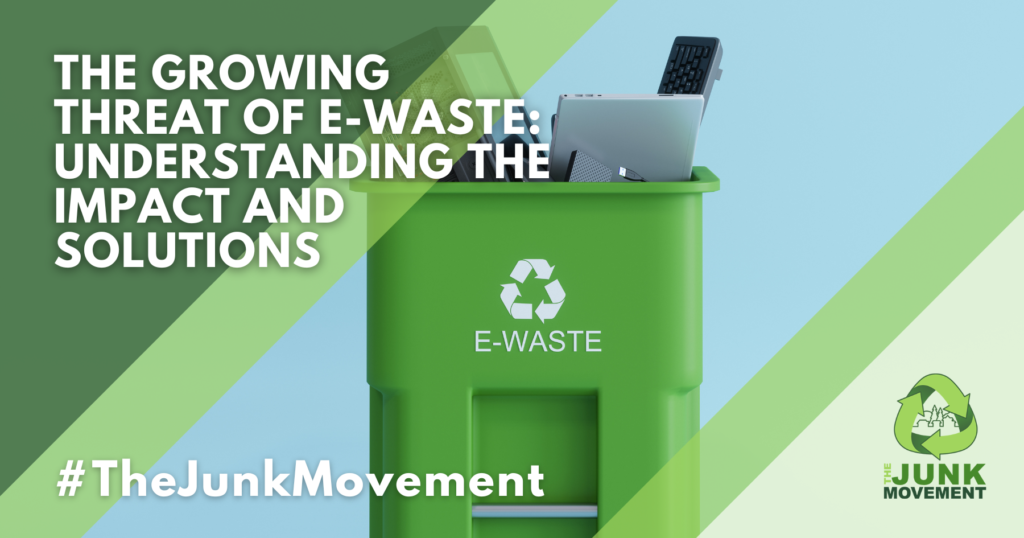In our digital age, technology has become an integral part of our daily lives, driving innovation, connectivity, and convenience. However, with the rapid pace of technological advancement comes a significant downside: electronic waste, or e-waste. As our reliance on electronic devices continues to grow, so too does the volume of electronic waste generated worldwide. In this blog, we’ll delve into the growing threat of electronic waste, its impact on the environment and human health, and explore potential solutions to mitigate this pressing global issue.
Understanding Electronic Waste
Electronic waste, or e-waste, refers to discarded electronic devices and equipment that have reached the end of their usable life. This includes everything from smartphones and laptops to TVs, refrigerators, and washing machines. E-waste contains a complex mixture of materials, including metals, plastics, glass, and hazardous substances like lead, mercury, and cadmium. Improper disposal of e-waste poses serious environmental and health risks, making it a growing concern worldwide.
The Impact of Electronic Waste
The proliferation of electronic devices has led to a staggering increase in e-waste generation globally. According to the Global E-waste Statistics Partnership, approximately 53.6 million metric tons of e-waste were generated worldwide in 2019, with only 17.4% of it properly collected and recycled. The rest often ends up in landfills, incinerators, or informal recycling operations, where it poses significant environmental and health hazards.
Environmental Impact
The improper disposal and management of e-waste have severe environmental consequences. When electronic devices are dumped in landfills or incinerated, they release toxic chemicals and heavy metals into the soil, air, and water, contaminating ecosystems and posing risks to wildlife and human health. Additionally, the extraction and processing of raw materials for electronic devices contribute to habitat destruction, deforestation, and resource depletion.
Health Risks
E-waste contains hazardous substances like lead, mercury, and brominated flame retardants, which can leach into the environment and accumulate in soil, water, and food chains. Exposure to these toxic chemicals can have serious health effects on humans, including neurological damage, respiratory problems, reproductive disorders, and even cancer. Informal recycling operations, often found in developing countries, expose workers and nearby communities to high levels of toxins and pollutants, exacerbating health risks.
Solutions to Address Electronic Waste
While the growing threat of electronic waste presents significant challenges, there are several solutions and strategies that can help mitigate its impact:
Extended Producer Responsibility (EPR)
Implementing EPR programs requires manufacturers to take responsibility for the entire lifecycle of their products, including collection, recycling, and disposal. EPR incentivizes manufacturers to design products with longevity, repairability, and recyclability in mind, thereby reducing e-waste generation and improving resource efficiency.
Promoting Repair and Reuse
Encouraging repair and reuse of electronic devices can extend their lifespan and reduce the need for new products. Repair cafes, community workshops, and online platforms facilitate repair and refurbishment of electronic devices, empowering consumers to make environmentally conscious choices and reduce e-waste.
Investing in Recycling Infrastructure
Building robust recycling infrastructure and facilities is essential for the proper management and recycling of e-waste. Government agencies, businesses, and NGOs can collaborate to establish collection points, recycling centers, and environmentally sound recycling processes to ensure that e-waste is safely and efficiently recycled.
Raising Awareness and Education
Educating consumers, businesses, and policymakers about the environmental and health impacts of e-waste is crucial for driving change. Awareness campaigns, educational programs, and advocacy efforts can help foster a culture of responsible consumption, disposal, and recycling of electronic devices.
Encouraging Sustainable Design
Encouraging manufacturers to adopt sustainable design principles, such as modular design, eco-friendly materials, and easy disassembly, can minimize e-waste generation and promote circular economy principles. Certifications like EPEAT and ENERGY STAR incentivize manufacturers to produce environmentally friendly and energy-efficient products.
Conclusion
The growing threat of electronic waste presents a significant challenge for society, but it also offers an opportunity for innovation, collaboration, and collective action. By understanding the impact of e-waste, implementing effective solutions, and promoting sustainable consumption and production practices, we can build a more resilient and sustainable future for generations to come. Let’s work together to turn the tide on electronic waste and create a healthier planet for all.
Join us and be part of the solution with The Junk Movement in the fight against electronic waste! Take action today by advocating for responsible e-waste management, supporting initiatives that promote recycling and reuse, and spreading awareness about the environmental and health impacts of electronic waste. Together, we can make a difference and pave the way towards a more sustainable future for our planet.




